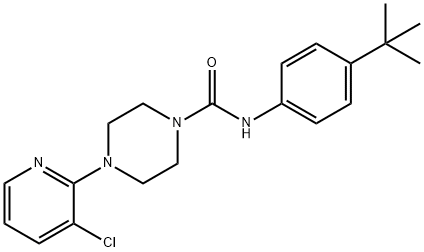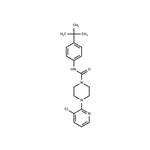Description
BCTC (393514-24-4) is a vanilloid receptor I (TRPV1) blocker, IC50 = 35 nM for capsaicin-induced and 6 nM for acid-induced TRPV1 activation. Displays analgesic activity in rat models of neuropathic pain. BCTC is orally active and cell permeable.
Uses
BCTC is a antagonists of TRPA1 and TRPV1, a non-selective cation channel gated by noxious heat, vanilloids and extracellular protons. BCTC inhibits both capsaicin and proton activation.
Definition
ChEBI: 1-piperazinecarboxamide, 4-(3-chloro-2-pyridinyl)-n-[4-(1,1-dimethylethyl)phenyl]- is a member of piperazines and a member of pyridines.
References
1) Valenzano et al. (2003), N-(4-tertiarybutylphenyl)-4-(3-chloropyridin-2-yl)tetrahydropyrazine -1(2H)-carbox-amide (BCTC), a novel, orally effective vanilloid receptor 1 antagonist with analgesic properties: I. in vitro characterization and pharmacokinetic properties; J. Pharmacol. Exp. Ther., 306 377
2) Pomonis et al. (2003), N-(4-Tertiarybutylphenyl)-4-(3-cholorphyridin-2-yl)tetrahydropyrazine -1(2H)-carbox-amide (BCTC), a novel, orally effective vanilloid receptor 1 antagonist with analgesic properties: II. in vivo characterization in rat models of inflammatory and neuropathic pain; J. Pharmacol. Exp. Ther., 306 387



